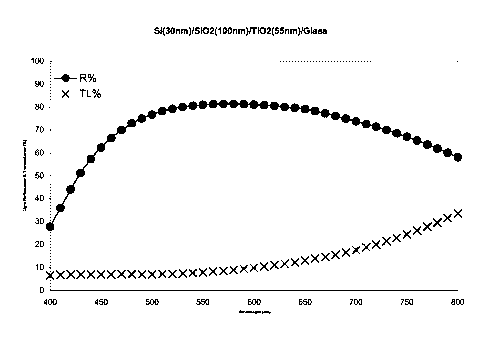Some of the information on this Web page has been provided by external sources. The Government of Canada is not responsible for the accuracy, reliability or currency of the information supplied by external sources. Users wishing to rely upon this information should consult directly with the source of the information. Content provided by external sources is not subject to official languages, privacy and accessibility requirements.
Any discrepancies in the text and image of the Claims and Abstract are due to differing posting times. Text of the Claims and Abstract are posted:
| (12) Patent Application: | (11) CA 2584274 |
|---|---|
| (54) English Title: | DICHROIC MIRROR |
| (54) French Title: | MIROIR DICHROIQUE |
| Status: | Deemed Abandoned and Beyond the Period of Reinstatement - Pending Response to Notice of Disregarded Communication |
| (51) International Patent Classification (IPC): |
|
|---|---|
| (72) Inventors : |
|
| (73) Owners : |
|
| (71) Applicants : |
|
| (74) Agent: | NORTON ROSE FULBRIGHT CANADA LLP/S.E.N.C.R.L., S.R.L. |
| (74) Associate agent: | |
| (45) Issued: | |
| (86) PCT Filing Date: | 2005-10-27 |
| (87) Open to Public Inspection: | 2006-05-04 |
| Availability of licence: | N/A |
| Dedicated to the Public: | N/A |
| (25) Language of filing: | English |
| Patent Cooperation Treaty (PCT): | Yes |
|---|---|
| (86) PCT Filing Number: | PCT/EP2005/055605 |
| (87) International Publication Number: | WO 2006045835 |
| (85) National Entry: | 2007-04-16 |
| (30) Application Priority Data: | ||||||
|---|---|---|---|---|---|---|
|
The present invention concerns dichroïc mirrors also known as optical filters.
In particular, rear view mirrors comprising a vitreous substrate coated with a
stack of interferential layers and with a metallic reflector. The stack of
layers includes, successively from the substrate, i) one layer of a high
refractive index material in the range of 1.9 to 2.8, ii) one layer of a lower
refractive index material in the range of 1.2 to 2, iii) one layer of
semiconductor material having a refractive index of more than 3. The
refractive indexes of high refractive index materials and of the low
refractive index materials differ at least by 0.2, and the coated substrate
has a transmittance at 550 nm of at least 6%, preferably at least 8% and a
reflectance at 550 nm greater than 45%, preferably greater than 50 %.
L'invention concerne des miroirs dichroïques également connus sous le nom de filtres optiques, notamment des rétroviseurs comportant un substrat vitreux revêtu d'une pile de couches d'interférence et d'un réflecteur métallique. Ladite pile de couches comporte successivement, à partir du substrat, i) une couche de matériau à indice de réfraction élevé dont l'indice de réfraction est compris entre 1,9 et 2,8 ; ii) une couche de matériau à indice de réfraction faible dont l'indice de réfraction est compris entre 1,2 et 2 ; et iii) une couche de matériau semiconducteur dont l'indice de réfraction est supérieur à 3. Les indices de réfraction des couches de matériau à indice de réfraction élevé et de matériau à indice de réfraction faible différent de l'ordre d'au moins 0,2, et le substrat revêtu présente un facteur de transmission d'au moins 6 % à 550 nm, de préférence d'au moins 8 %, et un facteur de réflexion supérieur à 45 % à 550 nm, de préférence supérieur à 50 %.
Note: Claims are shown in the official language in which they were submitted.
Note: Descriptions are shown in the official language in which they were submitted.

2024-08-01:As part of the Next Generation Patents (NGP) transition, the Canadian Patents Database (CPD) now contains a more detailed Event History, which replicates the Event Log of our new back-office solution.
Please note that "Inactive:" events refers to events no longer in use in our new back-office solution.
For a clearer understanding of the status of the application/patent presented on this page, the site Disclaimer , as well as the definitions for Patent , Event History , Maintenance Fee and Payment History should be consulted.
| Description | Date |
|---|---|
| Application Not Reinstated by Deadline | 2009-10-27 |
| Time Limit for Reversal Expired | 2009-10-27 |
| Deemed Abandoned - Failure to Respond to Maintenance Fee Notice | 2008-10-27 |
| Letter Sent | 2007-10-02 |
| Inactive: Multiple transfers | 2007-08-13 |
| Inactive: Cover page published | 2007-06-28 |
| Inactive: Notice - National entry - No RFE | 2007-06-26 |
| Inactive: First IPC assigned | 2007-05-09 |
| Application Received - PCT | 2007-05-08 |
| National Entry Requirements Determined Compliant | 2007-04-16 |
| National Entry Requirements Determined Compliant | 2007-04-16 |
| Application Published (Open to Public Inspection) | 2006-05-04 |
| Abandonment Date | Reason | Reinstatement Date |
|---|---|---|
| 2008-10-27 |
The last payment was received on 2007-04-16
Note : If the full payment has not been received on or before the date indicated, a further fee may be required which may be one of the following
Please refer to the CIPO Patent Fees web page to see all current fee amounts.
| Fee Type | Anniversary Year | Due Date | Paid Date |
|---|---|---|---|
| MF (application, 2nd anniv.) - standard | 02 | 2007-10-29 | 2007-04-16 |
| Basic national fee - standard | 2007-04-16 | ||
| Registration of a document | 2007-08-13 |
Note: Records showing the ownership history in alphabetical order.
| Current Owners on Record |
|---|
| FLABEG HOLDING GMBH |
| Past Owners on Record |
|---|
| LAURENT AUMERCIER |
| PIERRE ANDRE DREIDEMY |